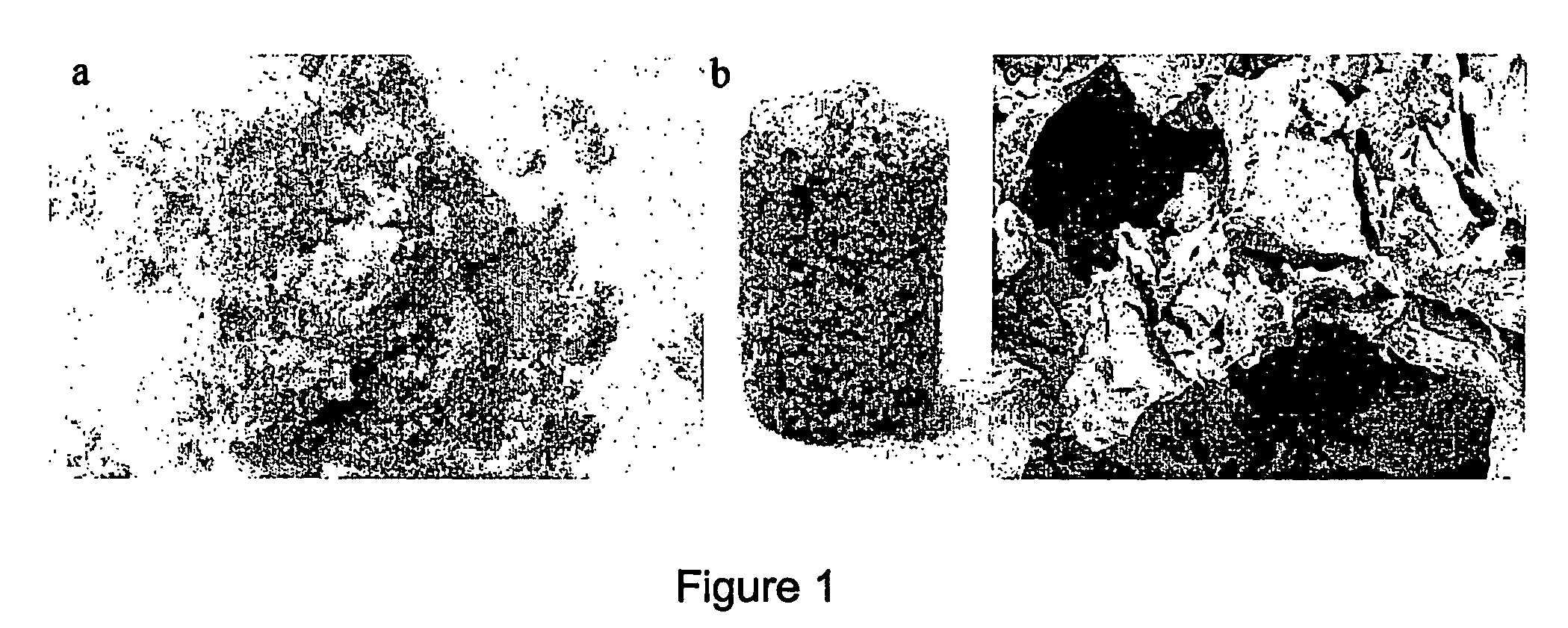Hydrogel Porogents for Fabricating Biodegradable Scaffolds
a biodegradable, hydrogel technology, applied in the direction of powder delivery, drug composition, prosthesis, etc., can solve the problems of incompatible use of injectable materials, insufficient porosity forming, and insufficient porosity forming, so as to eliminate the porogen leaching step and improve the rheologic properties
- Summary
- Abstract
- Description
- Claims
- Application Information
AI Technical Summary
Benefits of technology
Problems solved by technology
Method used
Image
Examples
example
[0032]The following Example has been presented in order to further illustrate the invention and is not intended to limit the invention in any way.
[0033]Gelatin microspheres were prepared by a method developed previously (see Payne et a., Development of an Injectable, In Situ Crosslinkable, Degradable Polymeric Carrier for Osteogenic Cell Populations. Part 1. Encapsulation of Marrow Stromal Osteoblasts in Surface Crosslinked Gelatin Microparticles, Biomaterials, 23, 4359-4371, 2002). Briefly, a solution of porcine gelatin powder in distilled deionized water (ddH2O), prepared by heating to 95° C., was added dropwise into mineral oil containing varying concentrations of dithiobis(succinimidylpropionate) (DSP) as the crosslinking agent. Gelatin microspheres formed and hardened by crosslinking. The microparticles were filtered and washed with phosphate buffered saline (PBS). The concentration of gelatin in the aqueous phase and that of DSP in the mineral phase controlled the equilibrium ...
PUM
| Property | Measurement | Unit |
|---|---|---|
| Diameter | aaaaa | aaaaa |
| Percent by volume | aaaaa | aaaaa |
| Percent by volume | aaaaa | aaaaa |
Abstract
Description
Claims
Application Information
 Login to View More
Login to View More - R&D
- Intellectual Property
- Life Sciences
- Materials
- Tech Scout
- Unparalleled Data Quality
- Higher Quality Content
- 60% Fewer Hallucinations
Browse by: Latest US Patents, China's latest patents, Technical Efficacy Thesaurus, Application Domain, Technology Topic, Popular Technical Reports.
© 2025 PatSnap. All rights reserved.Legal|Privacy policy|Modern Slavery Act Transparency Statement|Sitemap|About US| Contact US: help@patsnap.com


